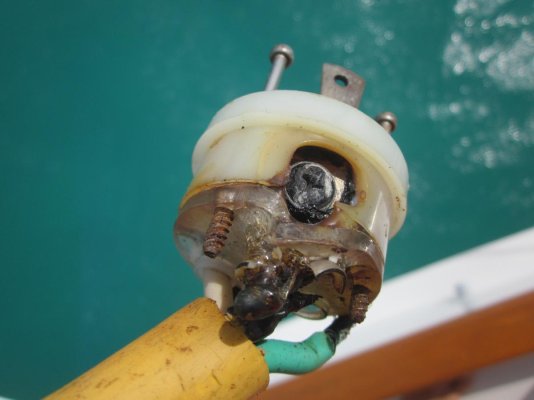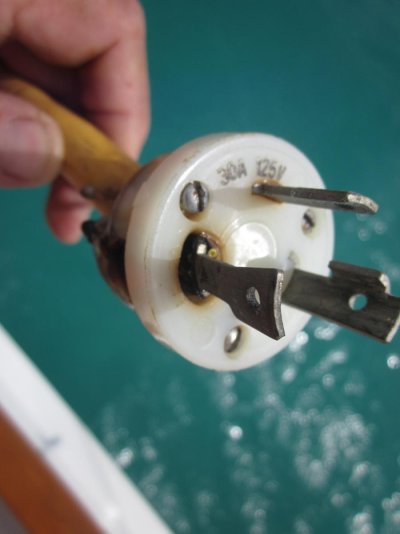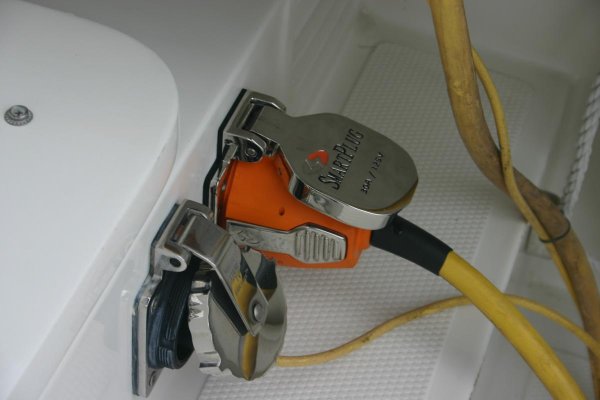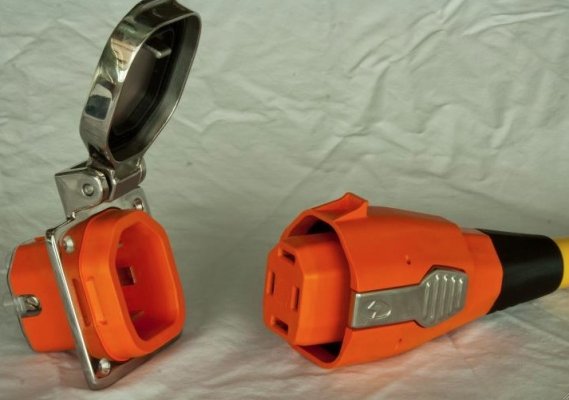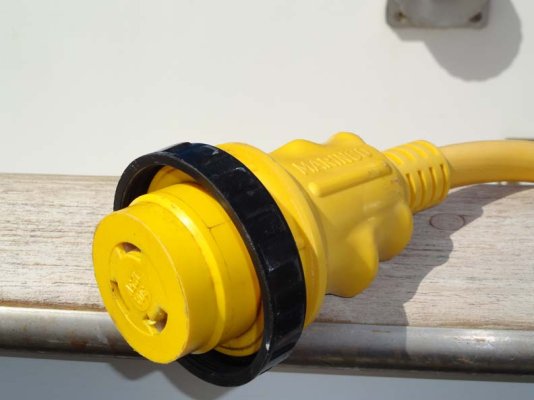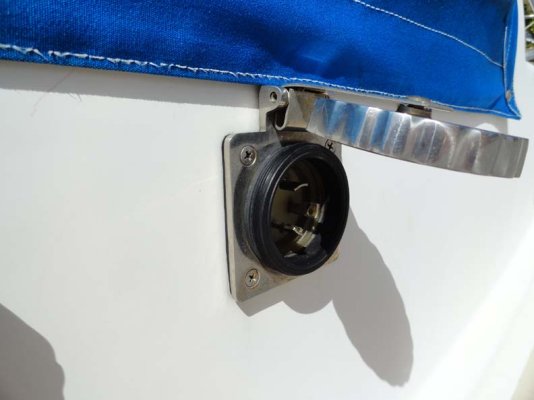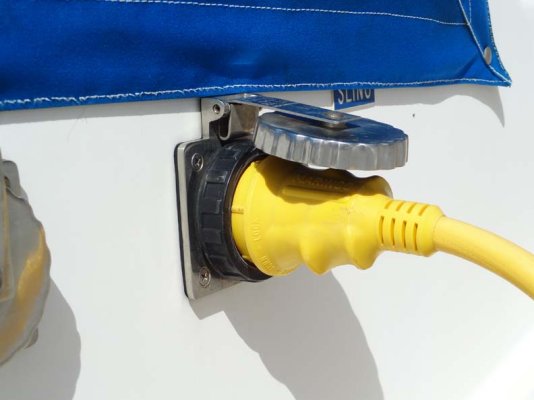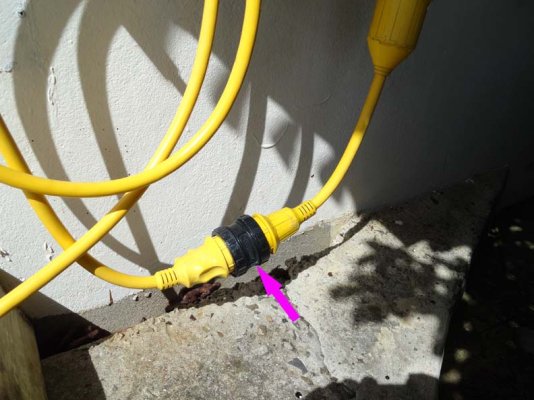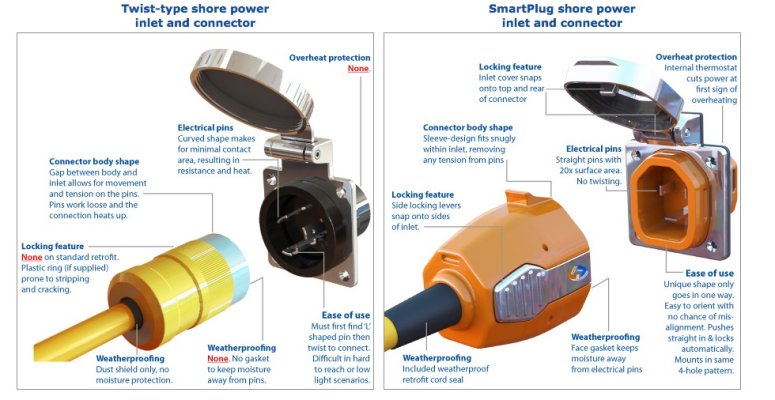Knot-Enuff
Veteran Member
The wife and I decided to enjoy the beautiful day on Galveston Bay. Every thing electric, 110 and 12v had been working fine without an indication of trouble. The generator started without issue as always. I went out to disconnect the shore power, shut of the breaker at the box and tried to remove the cord from the boat. It was stuck. Had to wiggle and use a lot of twisting pressure only to find that the female plug was burnt and melted and the male plug was also damaged. Upon return, I cleaned the fitting and cord and plugged it back in to find everything working fine. The cord is 50amp rated.
My question is, what caused this and how worried should I be about my electrical systems. I've checked everything and all systems are reading fine.
Thanks for your feedback. Jk
My question is, what caused this and how worried should I be about my electrical systems. I've checked everything and all systems are reading fine.
Thanks for your feedback. Jk

